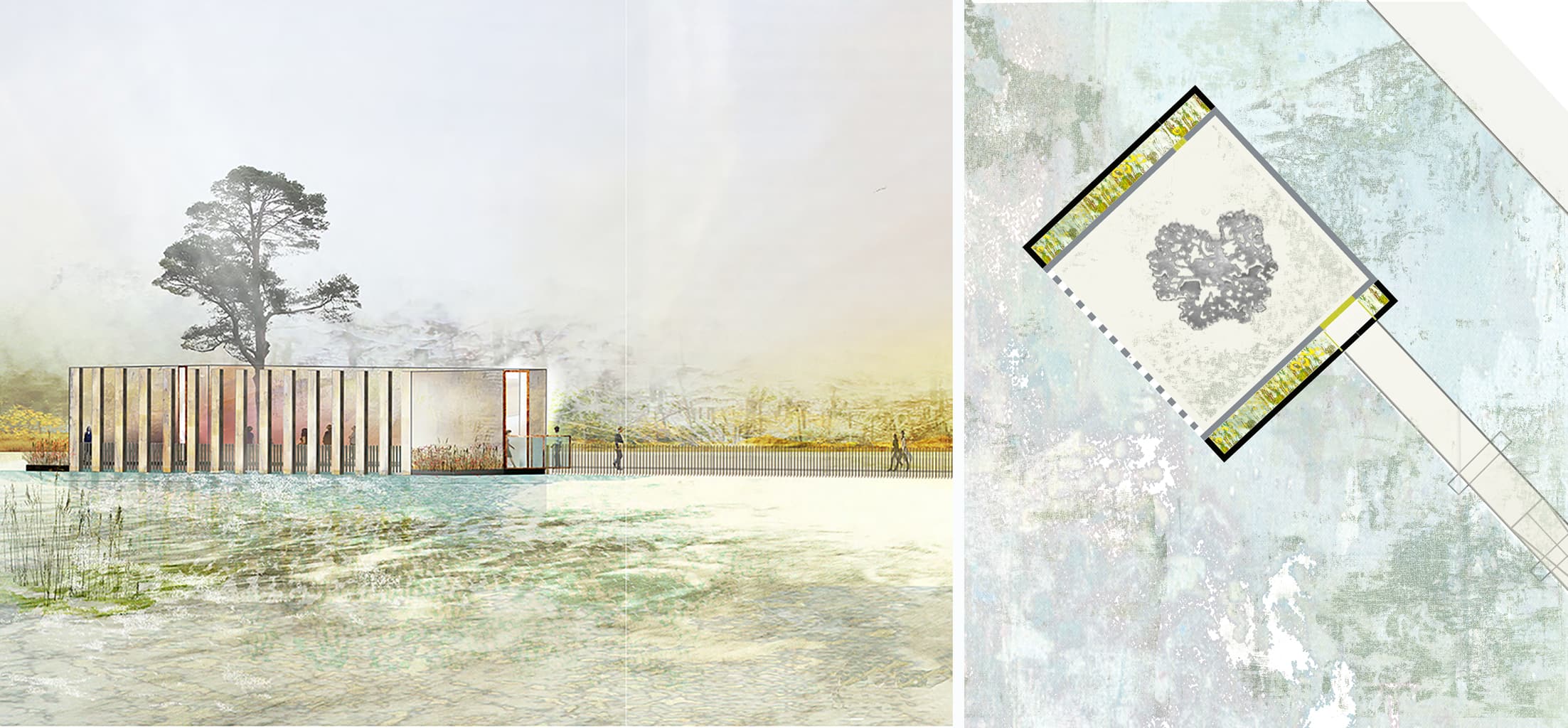Exploring accepted, experimental and relational dimensions of drawing time
Downloads
DOI:
https://doi.org/10.47982/spool.2022.3.06Keywords:
Drawing Time, Timescaping, Public Space Design, Relational Landscapes, Landscape Perception, Sensory Landscapes, Geographical Perception, Aesthetic ExperienceAbstract
This paper revisits a built project to reveal a hidden and experimental ambition for a public space through drawing in time.
Behind the project’s initial inception lay the designer’s motivation to challenge, open and expand the consideration of time in the way in which public landscapes are invented, configured and received. As such, the project sought to attend both to the way in which time manifests as a design consideration through drawing and to the way in which time could be conceptually and experientially sustained in the afterlife of the completed work.
In the inevitable ebbs and flows of productivity and decision taking that ran through the project, the designer came to realize that the ambitions outlined above stretched beyond their client’s comprehension of what the project could and should be. Instead, an aspiration to design “in time” became subservient to the client and stakeholders’ focus on the material manifestation of the work as a visual object and to the project’s public reception when it was deemed “complete”. For the designer this meant that opportunities to expand design thinking into practices tied to the continuing and relational opportunities of the space remained disappointingly determinate and closed.
By revisiting the existing representations and by making new drawings that were more explorative and unburdened by the conditions of project delivery, new liberty was found, revealing a unique bond between drawing in time and the relational opportunities of the work.
How to Cite
Published
Issue
Section
Plaudit
References
Abram, D. (1996, 2017). The Spell of the Sensuous. Vintage Books. Berger, J. (2009). About Looking. Bloomsbury.
Bourriaud, N. (2002). Relational Aesthetics. Les Presse Du Reel. Davidson, P. (2015). The Last of the Light. Reaktion Books.
Escobar, A. (2018). Designs for the Pluriverse. Duke University Press. Hunt. J D (2004). The Afterlife of Gardens. Reaktion Books.
Ialenti, V. (2020). Deep Time Reckoning : How Future Thinking Can Help Earth Now. The MIT Press. Ingold. (2011). Being Alive, Essays on movement, knowledge and description. Routledge.
Jekyll, G. (1899). Wood and Garden. Longmans and Co.
Massey, D. (2005). For Space. Sage.
Mouffe, C. (2008). Art as an Agnostic Intervention in Public Space. Open, Art as a Public Issue, 14(1), 6-15.
Perez-Gomez, A., & Pelletier, L. (2000). Architectural Representation and the Perspective Hinge. The MIT Press.
Sassen, S. (2016). A Third Space: Neither Fully Urban nor Fully of the Biosphere. In Graham, J., Blanchfield, C. Anderson, A., Carver J. H., & Moore, J. (Eds.), Climates. Architecture and the Planetary Imaginary. Lars Müller Publishers.
Spirn, A. W. (1998). The Language of Landscape. Yale University Press.
Staff, C. G. (2009). Embodiment, Ambulation and Duration. In Oddey, A., & White, C. (Eds.), Modes of Spectating. Intellect.
Thrift, N. (2009). Different atmospheres: of Sloterdijk, China and of site. Environment and Planning D: Society and Space. Volume 27, 119- 138. https://doi.org/10.1068/d6808
Tanizaki, J. (2001). In Praise of Shadows. Vintage.




